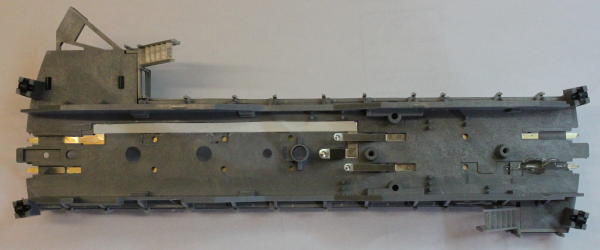Out turntable is a Fleischmann 9152 powered by a CML Electronics TXC1. During a recent operating session, we found the DCS100 command station beeping 24 times when it powered up; thereafter LocoNet devices including throttles didn't work. 24 beeps isn't a recognised code - what was happening?
I measured the LocoNet voltage from pin 2 to pin 3 on a LocoNet cable - around 8V. That's far too low - with no throttles attached it should sit at around 13v. The LocoNet is sectioned, so we were able quickly to isolate the problem to the Portsmouth area, then by elimination to the TXC1.
The TXC1 has an 18 ohm resistor between its power ground and LocoNet ground: that resistor was discoloured through overheating. Experience says that is a power supply problem (for example if the board power feed is biased relative to mains ground). It was a new power supply, but that wasn't the case. It turns out the 3 red/yellow/grey wires from the turntable were biased to half track voltage.
After taking off the turntable bridge and disassembling the mechanism, a possible cause was clear: there is a phosphor bronze springy strip running under each rail, and therefore under the body of the motor. The way the strip was mounted, it was springing up slightly (how far would be temperature dependent) and it could have made contact with the body of the motor. I've now attached a very think strip of plastic card to the springy strip and glued it down, so that it should remain isolated from the motor. I also took the opportunity to bypass the relay that isolates one track end on the bridge, so the full length of the bridge is now permanently powered.
And... two days later the problem came back. I was able to remove the turntable bridge from the turntable (so it looks like the picture above) and still measure 0 ohms from a rail connection to the motor feeds: so there was conclusive proof that the turntable, not the controller, was at fault; and the problem wasn't in the slip rings. But it was the other rail that was shorted (the bottom rail as protographed above), with no obvious way for that to happen. In the end I removed the relay that isolates part of the track at the bridge ends, and all has been fine ever since. I've soldered the rail gap, so the bridge track is now powered along its full length.

